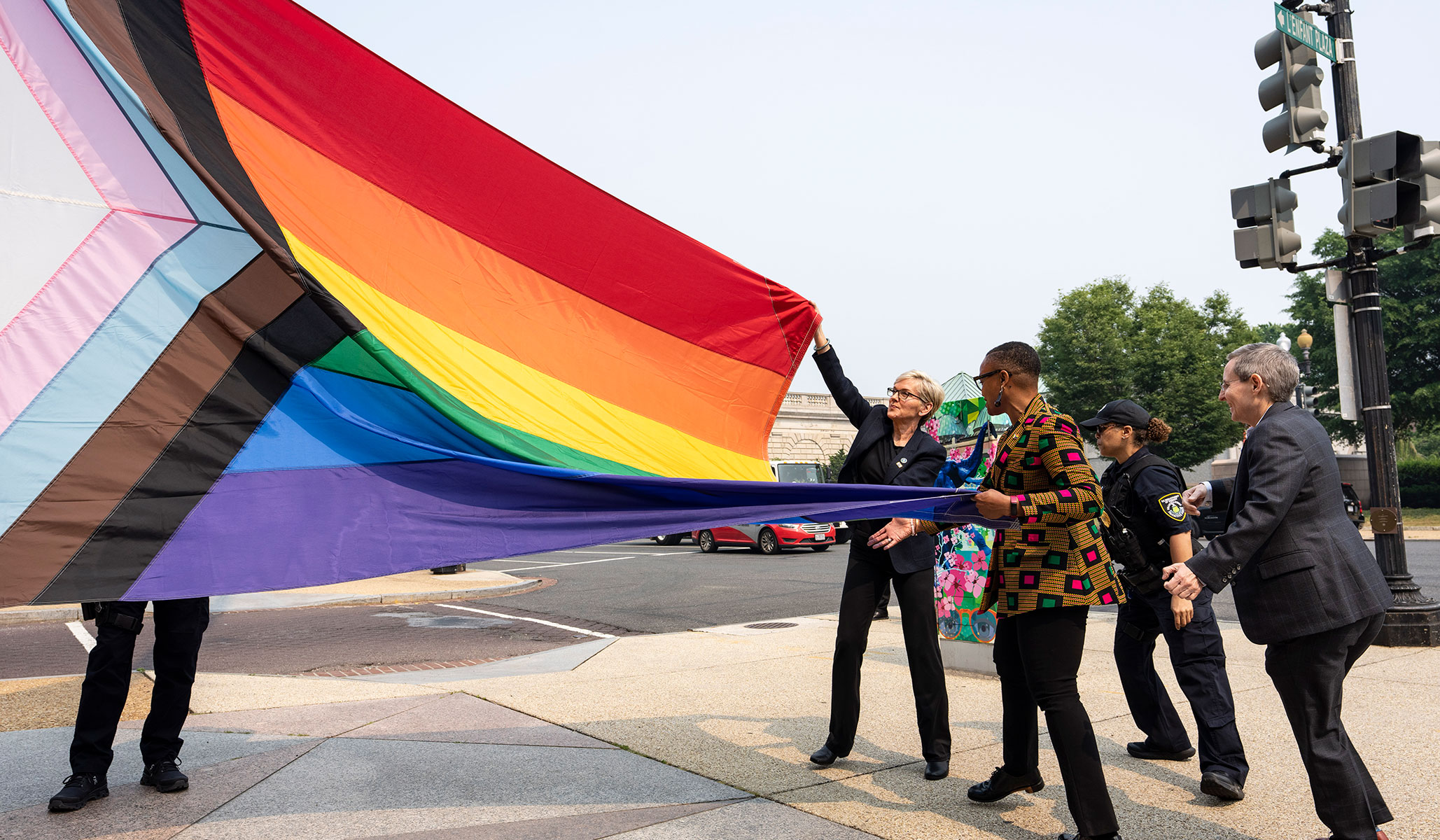As today is Flag Day, this opinion piece seems timely. It is not a perspective of the designated day but a perspective of other flags being flown this month.
Against the Pride Flag
Rich Lowry for National Review

It’s June, when one can be forgiven for thinking we live in the United States of LGBTQIA2S+.
Old Glory is, at best, supplemented with, and sometimes supplanted by, the pride flag in all its varieties.
The flag, which has become more and more unsightly, is ubiquitous. Its increasingly elaborate jumble of clashing stripes — whether seen in a store, at a ball game, or on U.S. government buildings — is a reminder to get with the program, and that the program is always changing.
Team Biden draped what is known as the Progress Pride flag, with no fewer than 11 different colors, on the White House in between two American flags, giving it — no pun intended — pride of place.
Flags aren’t trifling matters. People rally to them and live and die for them. The firing on the flag at Fort Sumter at the outset of the Civil War, for instance, had a galvanizing effect on the North. “On forts and ships, from church-spires and flag-staffs, from colleges, hotels, storefronts and private balconies, from public edifices, everywhere the old flag was flung out,” historian George Preble writes in a passage that could almost as accurately describe the unavoidable June displays of the pride flag.
Whereas the power of the Star-Spangled Banner is its extraordinary history, its relatively simple design, its easily understood symbolism, and its call to unify all Americans — not to mention the sacrifices made to defend it — the pride flag is the opposite.
It’s always being refashioned (the version displayed on the White House dates all the way back to 2018), it’s an aesthetic disaster, it’s inscrutable, and it’s a banner concerned with the recognition of splinter groups.
If you wanted to create a visual representation of “intersectionality,” the latest iterations of the flag would be it.
The old, quaint rainbow flag had the virtue of being simpler than its subsequent renditions and of representing broad categories of things (life, sunlight, etc.), rather than specific groups of people. The flag started as eight stripes and got dropped to six for pragmatic reasons before additional stripes started getting layered in.
As it happens, there are dozens of separate flags out there for every gender identity and sexual orientation — pansexual, non-binary, gender fluid, asexual, you name it. How could they be left out?
First, the City of Philadelphia added black and brown stripes to the top of the flag in 2017 to recognize people of color. The next year, a designer took the black and brown stripes — along with light blue, pink, and white stripes incorporated from the transgender flag — and put them in a horizontal chevron to make the Progress Pride flag.
Yet another update added a yellow triangle with a purple circle from the intersex flag.
The resulting banner has all the visual appeal of a TV test pattern. It’s hard to see any principle by which other groups should be excluded. By the time it’s all said and done, the thing could look like a Sherwin-Williams fan deck, if it doesn’t already.
Like the LBGTQ+ cause generally, the flag has become increasingly esoteric and obsessed with identity politics — there’s always another letter or another stripe. But what better representation of a movement that has gone down the rabbit holes of such bizarre causes as insisting that males compete in women’s sports and minors get life-altering “gender-affirming care” that other advanced countries are turning away from as a terrible mistake?
Yet, it flies everywhere as though it were a quasi-national flag with universal popular assent. Even U.S. government buildings here at home and U.S. embassies abroad are bedecked with the flag. If Republicans ever get unified control of government, they should ban this practice. The government shouldn’t be promoting boutique causes, and we already have a flag that includes everyone, that doesn’t require constant ideological makeover, and that isn’t an eyesore.
The Stars and Stripes should be sufficient for this and every month.
© 2023 by King Features Syndicate